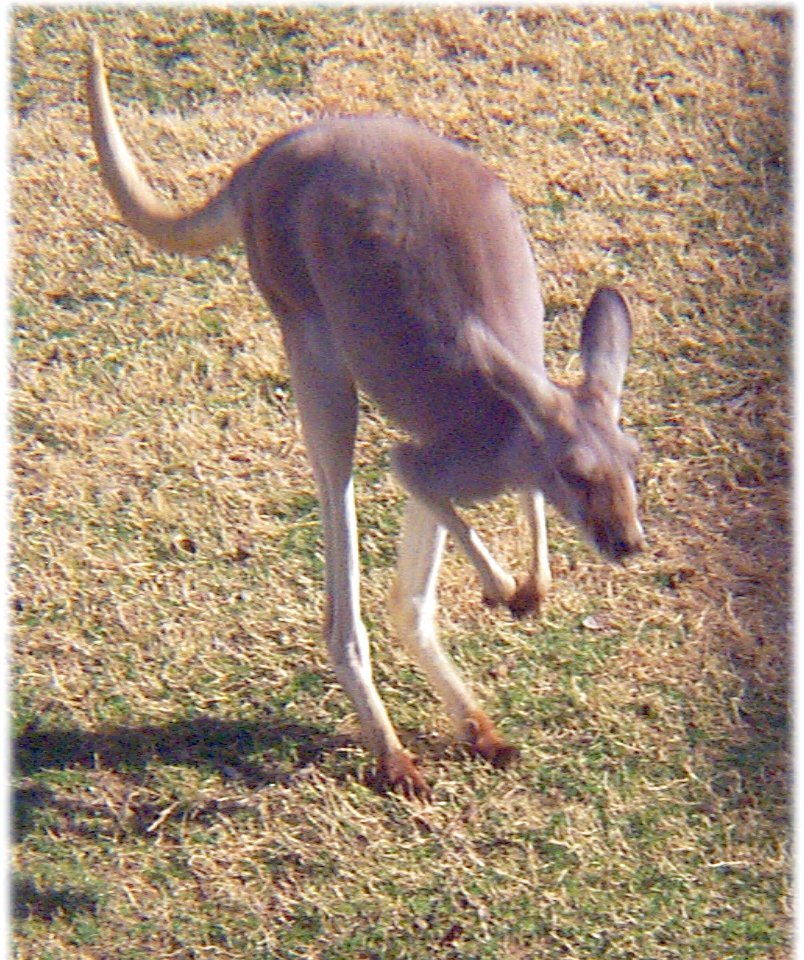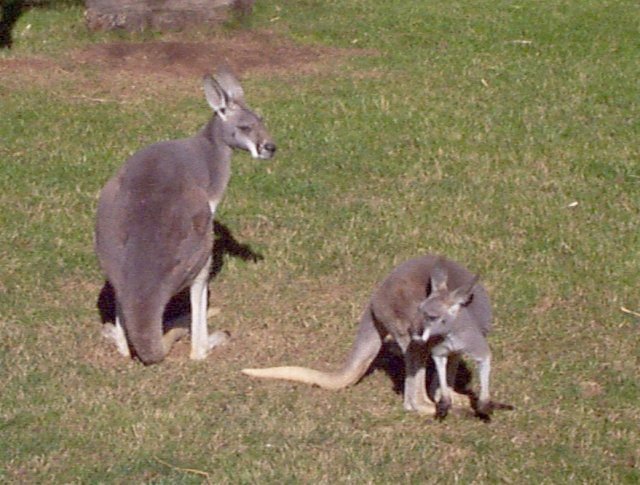

General information: The
Red Kangaroo (Macropus rufus), is the largest living marsupial. These animals
are mostly found in the dry inland Australia, including desert, grassland,
mallee, and mulga country. It is able to go with out drinking as long as
green grass is available and it adapts well to drought. Despite its name,
the Red Kangaroo is sometimes a blue-grey color, particularly the female.
Even though these animals look cuddly, they are to be approached with caution.
They have evolved with a large claw attached to its hind leg, therefore
this makes marsupials very dangerous. The
Red Kangaroo (Macropus rufus), is the largest living marsupial. These animals
are mostly found in the dry inland Australia, including desert, grassland,
mallee, and mulga country. It is able to go with out drinking as long as
green grass is available and it adapts well to drought. Despite its name,
the Red Kangaroo is sometimes a blue-grey color, particularly the female.
Even though these animals look cuddly, they are to be approached with caution.
They have evolved with a large claw attached to its hind leg, therefore
this makes marsupials very dangerous. |

| Special anatomical,
physiological or behavioral adaptations: Red Kangaroos can hoop as
fast as 40 mph (64 km). They use this as their first line of defense.
Kangaroos have a tendon in the leg which acts like a rubber band, conserving
energy as the animal moves lands. Red Kangaroos actually expand less
energy in locomotion as they move faster, up to very fast speeds.
Red Kangaroos are most active at night and in the few hours after sunrise and sunset. They forage less and rest more during the day in winter than in the spring or summer. |
| Comments about the kangaroos of the Fort Worth Zoo. Every time I went to the zoo, I never really had a chance to get a really good glimpse of the kangaroos, either they were eating or they were sleeping. Something was always going on. But, once in awhile I did observe their actions and talk to one of the zoo keepers. They gave me a lot of information about "kangaroos" in general and they also told me about their observations over the actions of these cutsey marsupials. |
| Personal Observations: From what I did observe, these animals protected their Joey's constantly. If one of the other kangaroos approached the Joey's and the parents of the Joey didn't approve of it, them the male of the family would let the visitor know about it. I also thought that the way the kangaroos used their tails to jump fascinating. |
|
E-Mail: annseitz@hotmail.com |
WhoZoo Home Animal Index |
| Source list:
Grzimek's Animal Encyclopedia (10) Red Kangaroos Philadelphia Zoo: http://www.phillyzoo.org/pz0069.htm Animal PostCards: Red Kangaroo http://www.planetozkids.com/oban/kangpost/kangpost.html Red Kangaroo at the Hogle Zoo: http://www.xmission.com/~hoglezoo/mammals/kangroo.htm Hopping kangaroo image fromKristen's Animated Animals Australian Animals: Kangaroos http://mag-nify.educ.monash.edu.au/acps_animals97/kangaroo.htm |